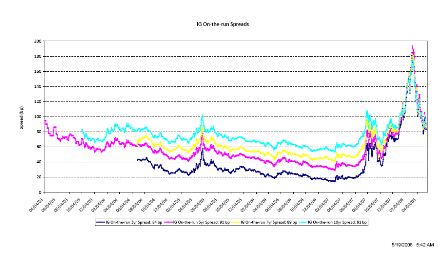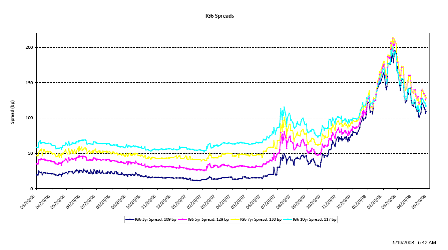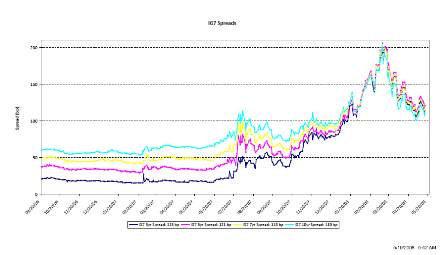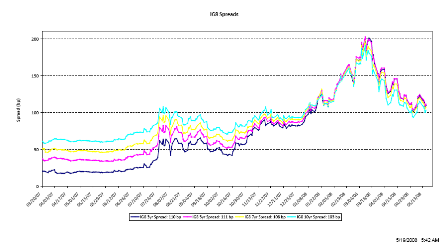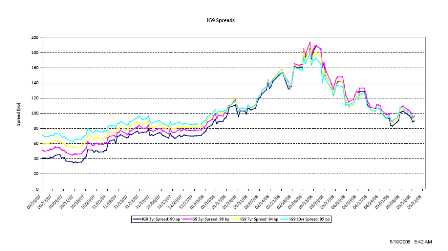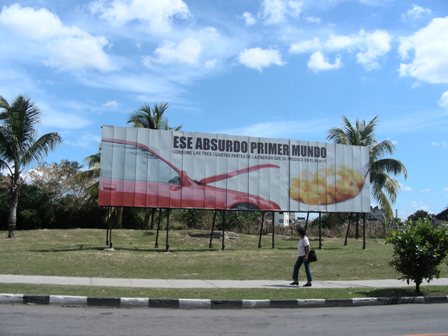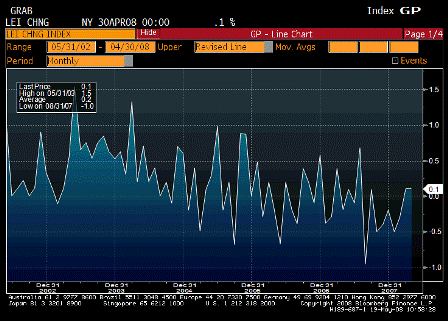[Skip to the end]
Whether the ‘definitions’ call the food and energy price hikes ‘inflation’ or not, they are still problematic.
There are two choices for government: try to sustain aggregate demand or try to reduce aggregate demand.
Currently, the policy is to say ‘inflation’ is not a problem and try to sustain aggregate demand, as evidenced by the tax rebates and Fed rate cuts.
(NOTE: I don’t think rate cuts add to demand, but the Fed does.)
And as oil climbs in price, markets discount lower rates from the Fed (markets also think lower rates add to demand).
And, for another fiscal example, Obama speaks of tax cuts for the middle class so people can pay for their food and energy. Adding to demand like that will drive prices up further.
Supply responses aren’t particularly price sensitive in the short run; so, crude could go up a lot more before something like pluggable hybrids in sufficient quantities cut demand for gasoline by the 5-10 million bpd necessary to break the rise in crude prices.
And by that time the pass throughs to the rest of the economy (yes, including housing and wages) will be well entrenched.
The other choice for government is to cut aggregate demand. This means tax hikes or spending cuts, and a deep, ugly recession to hopefully cut demand for gasoline that way. Looks even more painful and less promising, if that’s possible.
I have suggested cutting demand for gasoline with a ‘non-price’ policy of setting the national speed limit at 30 mph for private transportation. This is a conceptual extension of policies mandating mpg, etc. It will cut gasoline demand by perhaps 5 million bpd and if adopted world wide more than that, but has yet to even enter the national debate.
So it will be a debate between adding to aggregate demand and cutting aggregate demand – like choosing whether you want to get shot with a revolver or an automatic.
The days are numbered for current bias to add to demand – the limits of ‘inflation’ tolerance aren’t far away. We are only now probably seeing the pass through from $60 crude. There is much more to come, and for several years. And in hindsight, the current policy of adding to demand will at best be considered an error of judgment.
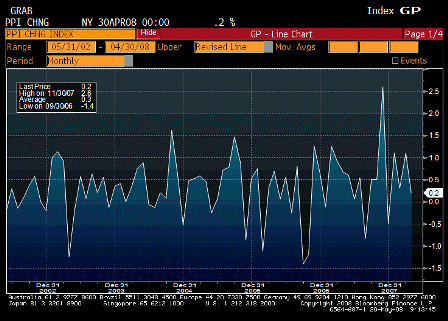
Producer Price Index MoM (Apr)
| Survey |
0.4% |
| Actual |
0.2% |
| Prior |
1.1% |
| Revised |
n/a |
[top][end]
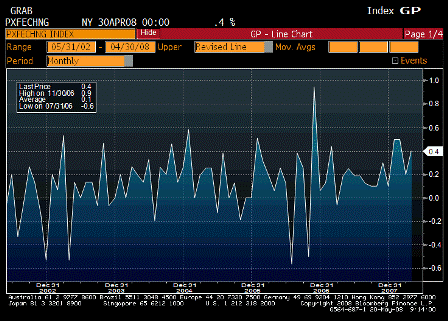
PPI Ex Food & Energy MoM (Apr)
| Survey |
0.2% |
| Actual |
0.4% |
| Prior |
0.2% |
| Revised |
n/a |
[top][end]
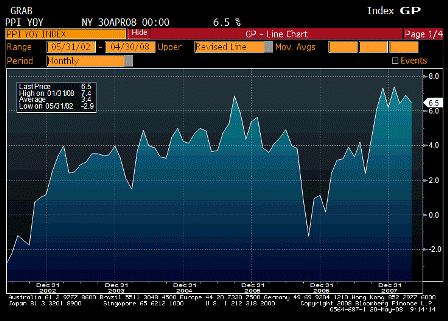
Producer Price Index YoY (Apr)
| Survey |
6.7% |
| Actual |
6.5% |
| Prior |
6.9% |
| Revised |
n/a |
This all either gets passed through to all other prices (inflation) or real terms of trade deteriorate further – both unpleasant at best.
[top][end]
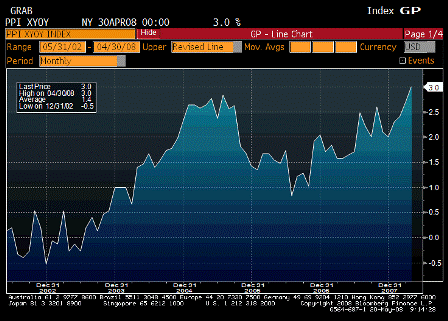
PPI Ex Food & Energy YoY (Apr)
| Survey |
2.9% |
| Actual |
3.0% |
| Prior |
2.7% |
| Revised |
n/a |
The pass through has started and has long way to go just based on current energy prices.
[top][end]
IBD/TIPP Economic Optimism (May)
| Survey |
37.8 |
| Actual |
40.3 |
| Prior |
39.2 |
| Revised |
– |
Add one more to the ‘better than expected’ list.
[top][end]
ABC Consumer Confidence (May 18)
| Survey |
– |
| Actual |
– |
| Prior |
2.9% |
| Revised |
– |
[comments]
[top]





